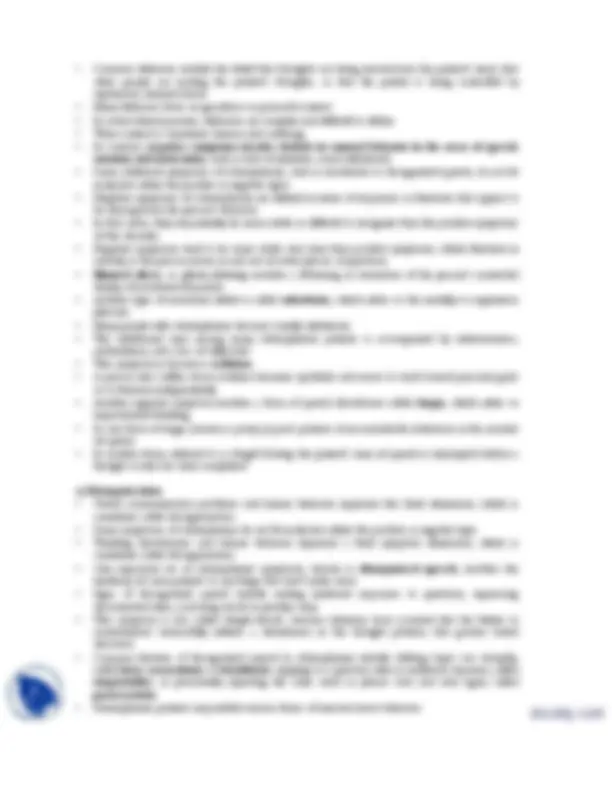





Study with the several resources on Docsity

Earn points by helping other students or get them with a premium plan


Prepare for your exams
Study with the several resources on Docsity

Earn points to download
Earn points by helping other students or get them with a premium plan
Community
Ask the community for help and clear up your study doubts
Discover the best universities in your country according to Docsity users
Free resources
Download our free guides on studying techniques, anxiety management strategies, and thesis advice from Docsity tutors
An in-depth exploration of schizophrenia, a psychotic disorder characterized by changes in thinking, feeling, and behavior. Learn about the most common symptoms, positive and negative, and their impact on various aspects of a person's life. Discover the different subtypes of schizophrenia, including catatonic, disorganized, undifferentiated, residual, and schizoaffective disorder.
Typology: Exercises
1 / 6

This page cannot be seen from the preview
Don't miss anything!




Schizophrenia is a psychotic disorder. The most common symptoms of schizophrenia include changes in the way a person thinks, feels, and relates to other people and environment. Psychosis is a state in which individuals lose contact with reality. It frequently appears in the form of schizophrenia, a disorder in which previously adaptive levels of social, personal, and occupational functioning deteriorate into distorted perceptions, disturbed thought processes, deviant emotional states, and motor abnormalities. Approximately 1 percent of the world's population suffers from this disorder. Many clinicians believe that schizophrenia is a group of distinct disorders that share some common feature 1- Loss of contact with reality. 2- Deterioration at social, personal, and occupational level of functioning. 3-Distorted perceptions, disturbed thought processes, deviant emotional states, and motor abnormalities. 4- Delusions defined as false beliefs based on incorrect inferences about reality. 5- Hallucinations are sensory experiences that are not caused by actual external stimuli.
Examples i) Mr. A was first hospitalized for hearing voices ten years ago when he was in senior school. His medications have now seemed to prevent his bizarre beliefs and odd behavior but he has never been able to stay at school or work. ii) Mr. B had his first psychotic episode during college, he manifested paranoid delusions that his mind was controlled by forces that broadcast to him through radio waves and that he was sure that there was a plot to kill him. iii) A homeless woman collects empty bottles, cans and cartons from trash and last week she set up a camp under a tree and spent days there. Regardless of the weather she wears in layers all the clothing she possesses. iv) A student reported to the department chairperson that one of her professors is plotting against her, all the students are after her and the university doctor has plans to kill her. These are all examples of people suffering from Schizophrenia.
The answer to all these questions is complex and difficult.
Is Schizophrenia a disease like diabetes?
Why study Schizophrenia?
The problems of most patients can be divided into three phases of variable and unpredictable duration: prodromal, active, and residual.
1- Prodromal Phase
2- Residual Phase
a) Positive symptoms, also called psychotic symptoms.
b) Negative symptoms , on the other hand, are characterized by the absence of a particular response (such as emotion, speech, or willpower).
Brief Historical Perspective
Subtypes DSM-IV-TR recognizes five subtypes of schizophrenia. i) The catatonic type is characterized by symptoms of motor immobility (including rigidity and posturing) or excessive and purposeless motor activity. ii) The disorganized type of schizophrenia is characterized by disorganized speech, disorganized behavior, and flat or inappropriate affect. iii) The most prominent symptoms in the paranoid type are systematic delusions with persecutory or grandiose content. iv) The undifferentiated type of schizophrenia includes schizophrenic patients who display prominent psychotic symptoms and either meet the criteria for several subtypes or otherwise do not meet the criteria for the catatonic, disorganized, or paranoid types.